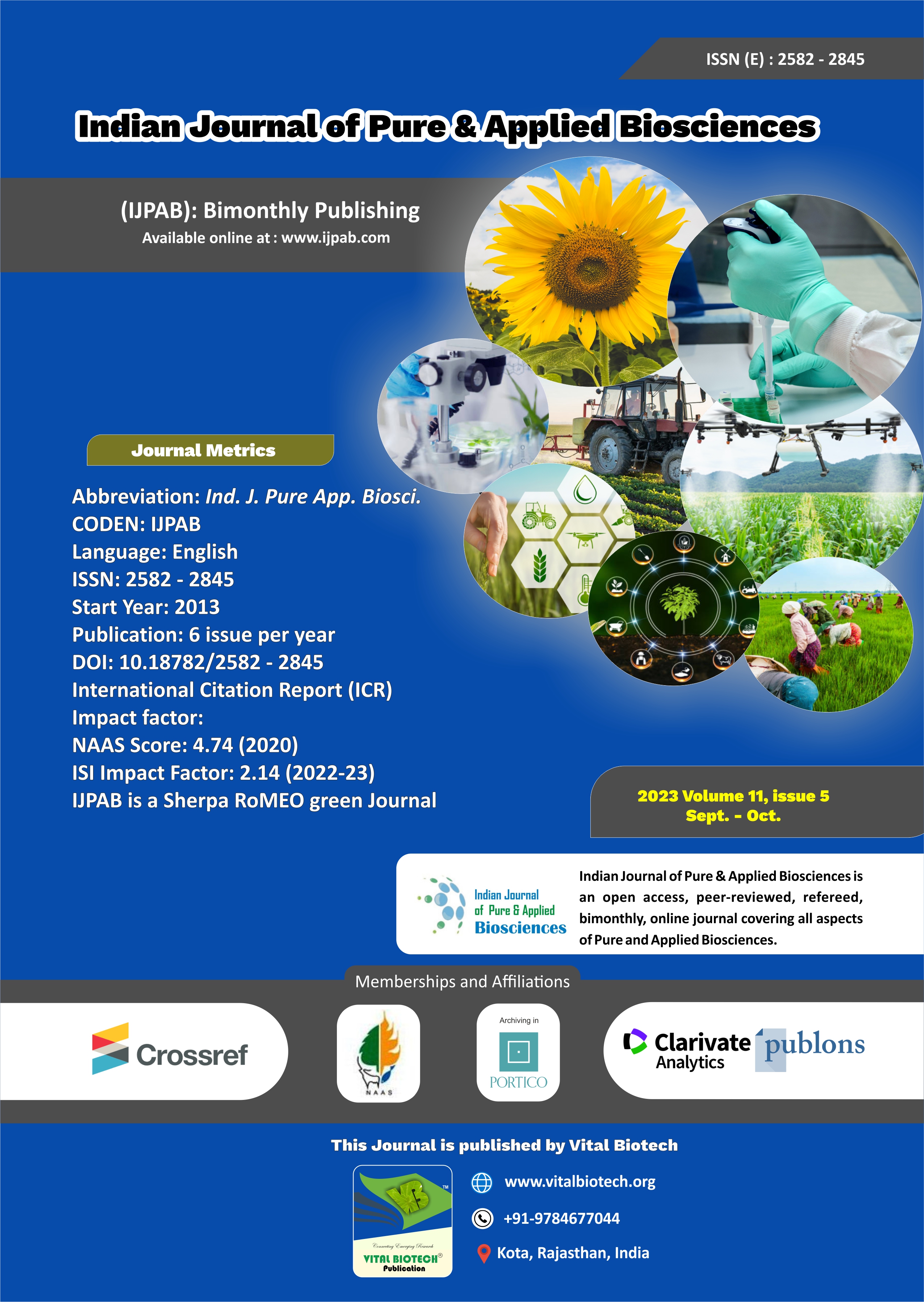-
No. 772, Basant Vihar, Kota
Rajasthan-324009 India
-
Call Us On
+91 9784677044
-
Mail Us @
editor@ijpab.com
Indian Journal of Pure & Applied Biosciences (IJPAB)
Year : 2023, Volume : 11, Issue : 5
First page : (22) Last page : (31)
Article doi: : http://dx.doi.org/10.18782/2582-2845.9025
Immobilization Strategies for L-Asparaginase from Ganoderma australe GPC191: Impact on Enzyme Activity, Stability, and Reusability
Meghna Chakraborty1 ![]() and Srividya Shivakumar2*
and Srividya Shivakumar2* ![]()
1Department of Microbiology, School of Sciences, 2School of Allied Healthcare and Sciences (SAHS),
JAIN (Deemed-to-be University), Bangalore, Karnataka-560066, India
*Corresponding Author E-mail: sk.srividya@jainuniversity.ac.in
Received: 25.04.2023 | Revised: 22.06.2023 | Accepted: 08.07.2023
ABSTRACT
L-asparaginase has garnered significant attention for its potential therapeutic applications in cancer treatment, as well as its role in mitigating acrylamide in the food industry. However, the widespread implementation of free L-asparaginase in industrial processes has faced substantial obstacles, primarily attributed to issues such as reduced stability, high production costs, and limited recyclability. In order to address these challenges and fully unleash the capabilities of L-asparaginase, the current investigation was centered on the exploration of L-asparaginase immobilization derived from Ganoderma australe GPC191. The various immobilization matrices were assessed, including gelatin, agarose, agar, and combinations thereof with sodium alginate, carboxymethyl cellulose, and calcium phosphate. These matrices were evaluated based on critical parameters such as enzyme activity after immobilization, loading efficiency, recyclability, and storage stability. Among the diverse matrices considered, the alginate-gelatin-calcium phosphate capsules emerged as the best, exhibiting remarkable characteristics such as an enzyme activity of immobilized L-asparaginase at 60.43 U/mL, an impressive loading efficiency of 94.82%, sustained recyclability with 51% stability even after 16 cycles, and a storage efficiency only reducing to 27% at six months. These outstanding attributes position them as a promising choice for industrial applications. The encouraging outcomes of this investigation could be further refined through research into the effects of altering the concentrations of matrix components, shedding light on how these adjustments influence enzyme properties and their interactions with the external environment.
Keywords: Ganoderma australe, L-asparaginase, Immobilization, Sodium alginate-gelatin-CaP capsules
Full Text : PDF; Journal doi : http://dx.doi.org/10.18782
Cite this article: Chakraborty, M., & Shivakumar, S. (2023). Immobilization Strategies for L-Asparaginase from Ganoderma australe GPC191: Impact on Enzyme Activity, Stability, and Reusability, Ind. J. Pure App. Biosci.11(5), 22-31. doi: http://dx.doi.org/10.18782/2582-2845.9025


